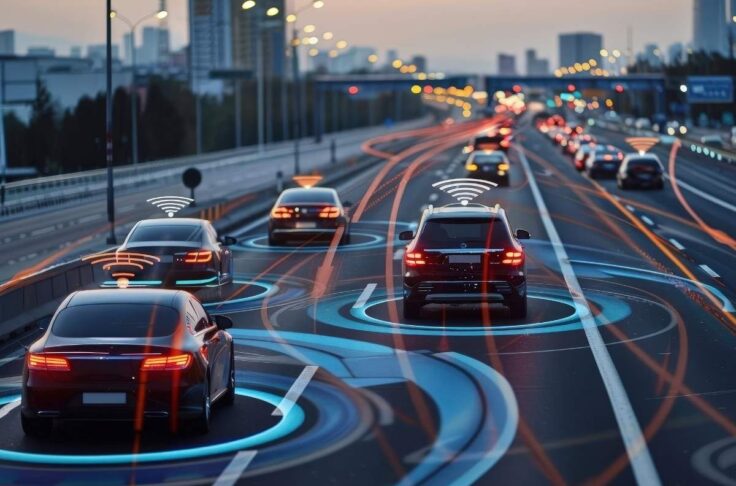Trip to India: Exploring Mobility Within Dense Areas
Summary
India is home to a strong two-wheeler culture to get around the congested, urban streets. While not all cities look like this, there are valuable lessons to learn from how transportation and mobility is managed in India. Understanding the local mobility culture and providing the right vehicle type and service is key.


India is the second most populated country in the world, and getting from A to B can be quite the journey along crowded streets. From rickshaws to public transportation to shared mobility services, there are numerous transportation options, but there are still gaps to fill.
We interview Bharath Devanathan for his insights on the mobility landscape in India. Bharath spent the last few years as the Senior VP of Growth and EV at Bounce, where he used his multi-disciplinary background to scale the presence of Bounce across India.
What are the main forms of mobility in India? Does it vary widely between cities?
The most common mobility thread across India is the popular 2-wheeler, specifically mopeds (more commonly referred to as scooters in India). Some cities have higher density of scooters than others due to the demographics of the city, such as Bangalore, Hyderabad, and Pune. These cities have a lot of offices with I.T. workers, migrant populations that live and work there, and many education hubs such as universities and colleges with a lot of students. People can get a license to drive a scooter at as young as 16 and there are 20-25 million scooters sold annually. Across India, there are currently 250-300 million scooters on the road. It’s a way of life.
While some may choose to buy a car, scooters are the go-to vehicle as a first purchase since it is the cheapest form of owned mobility. A combustion engine/petrol scooter costs around 40,000 Rupees, so around $500-600; for $1,000, you can get a premium version that will last a few years without giving you any trouble. Electric scooters hit the market only recently, and no more than 3,000 vehicles have been sold. It is generally more expensive than a petrol scooter, but the gap is narrowing very quickly.
Public transport is also widely used for two reasons: first, majority of the population can’t afford to buy their own vehicle, so public transport is heavily used. Second, in some cities, public transport is very well established and dense, connecting different parts of the cities quite well. Even those who have their own vehicles might prefer to use public transport to get around. However, these cases are rare because the first mile-last mile gap in India averages around 5 miles both ways. Due to the large distance, public transport doesn’t cater to all the needs of the citizens within the country.
How do people use bikes and kick scooters in India?
Generally, bikes are not a popular way to commute, mainly due to the lack of infrastructure, road conditions, and long distances that are not conducive for bikes. Very few people own bikes and those who do use it mainly for recreational or leisure activities on the weekend. However, this is slightly different in rural India. Not that the infrastructure is any better there, but there is less traffic and more room, so it’s safer to get around with a bike. Throughout India, there are no bike lanes, so it can be a bit scary to use this form factor in busy and jam-packed streets. For the same reasons, it’s not realistic to get around by kick scooters either.
The use for bikes or kick scooters can be found in closed environments with good infrastructure, such as university campuses or office complexes to get around. But they’re not for public use, which is why you don’t see any major providers here like Lime or Bird.
How have consumers adopted shared mobility and is one mode more popular than others?
Cities with huge migrant population are rapidly urbanizing, but public transport is often not dense enough or spread out evenly across the city to be a reliable mode of transportation. For those who can afford it, they would rather buy their own scooter to get around.
However, if purchasing is not an option for them, then shared mobility becomes very appealing. The cost is just a bit more expensive than public transport, which by the way is mostly not subsidized. When shared mobility was introduced to India in 2018, it took off quickly and was adopted by many people. After an initial marketing push, word spread and a lot of people started using shared scooters. For carsharing, there are a few well-known companies mostly doing station-based sharing. This is also another popular option, though scooters are still preferred.
What trends do you see in the shared mobility space in India?
In terms of shared mobility, there are two main operational models: free floating to get from point A to B and station-based for daily, weekly, or monthly rentals. What we’re seeing now is a blurring between these two models. People don’t have single use cases anymore, they have diverse needs and want to have the option and flexibility to do it all. The same person who might have a monthly subscription rental might also want other vehicles for their spontaneous free floating needs as well.
Because there are a lot of scooters being used by food and courier delivery companies, there is a substantial market for that type of transportation as well. Companies are looking to cross-utilize vehicles and share fleets across B2B and B2C segments to optimize utilization.
Existing mobility services are also exploring new business opportunities. Subscription models are growing in India and we see players like Vogo growing that space as well. At the same time, ride hailing services like Uber and Ola are popular and becoming a way of life for many people.
How has the pandemic influenced how people choose to get around?
Mobility has changed quite a bit as a result of the pandemic because some people were forced to buy their own scooters. Globally, there has been an increase in sales of all types of vehicles as well. This is an example of history repeating itself. In 2013, the SARS outbreak in China resulted in a 28% increase in EV sales. The biggest reason for this was because people did not want to commute using public transportation. If people chose to drive, they needed to do it in an electric vehicle because regulations prohibited non-EVs in downtown. In India, we are seeing a similar situation unfold, though not at such a large scale. There is a trend towards ownership, which has helped grow the sales of electric scooters.
In general, the utilization of shared mobility has taken a hit, as people do not commute as much. India is in the middle of a huge second wave, and more people are working from home. Even when things get back to normal, it will be a different environment where people won’t go to the office every day, just a few times a week, and this will definitely impact shared mobility.
What is the role of the Indian government in the push towards more sustainable mobility options and usage?
The government has been involved in two ways: on the central government policy level and on the state level. The government has subsidized electric vehicle purchases based on battery capacity, which is one reason why the price gap between gasoline and electric scooters is narrowing. In addition, every state issues its own subsidy, further reducing the cost of purchasing an EV.
There are policies for lower import taxes for EV components and the government is also incentivizing local production. For example, if you want to start manufacturing electric vehicles, the government mandates that in 6-12 months, a substantial percentage of your parts have to be manufactured locally. Essentially what the government is trying to do is create a growing industry within India.
Why would a shared mobility operator want to build their own vehicle?
The majority of the scooters available in the market are made for consumers, meaning they are often not stable, sturdy, and durable enough for sharing purposes. In addition, a scooter sharing operator may need specific features in the vehicle that are missing and cannot be retrofitted to the vehicle after production.
Another aspect to consider is that in the consumer market, scooters need to be made with parts that are easily available for replacement. But for shared mobility, we don’t want to use parts that can be used in the second-hand market, because that would encourage theft. If operators develop their own vehicle for sharing, then there is an additional layer of security for the vehicle.
For new mobility operators looking to launch in India, what advice do you have for them?
I have three pieces of advice:
- Each city is different. What works in one city won’t necessarily work in another city. The patterns and demographics of the city dictate how shared mobility will perform.
- Pricing plays a very important role. People are very price sensitive here in India and at the right price point and right value, people will adopt your shared mobility service.
- Start with robust products that already have good reputation in the market and are known to be sturdy. Don’t spend too much time reinventing the wheel. Use products that have already shown to work.
In cities where shared mobility already exists, like Bangalore or Hyderabad, the shared mobility culture is now established. Only an initial educational marketing campaign might be needed to say that you have arrived to highlight this new mobility option. Afterwards, the message will spread quickly, and the service will sell itself.
Which cities would you take us to and what would you recommend we try out if you were to give us a taste of the Indian mobility culture and habits?
The transportation system in Mumbai is very punctual and serves as the city’s lifeline. Many people depend on it, since the city life is expensive a lot of people commute from the outskirts of the city to the center for work on a daily basis.
I would also take you on the ‘Auto’, which is the equivalent to a tuk tuk you would find in Southeast Asia. These can be used at a very reasonable price and it is very easy to get to your destination. You just hail one on the road and enjoy the airy mode of transportation.
There is also the cycle rickshaw, where you sit in a carriage and someone pedals you around. In many cities, rickshaws are moving towards being electric-powered. In northern cities in India, like Delhi or Punjab, there are electric rickshaws that can take up to 5 or 6 people. It’s a great option for getting around and touring the city center.


